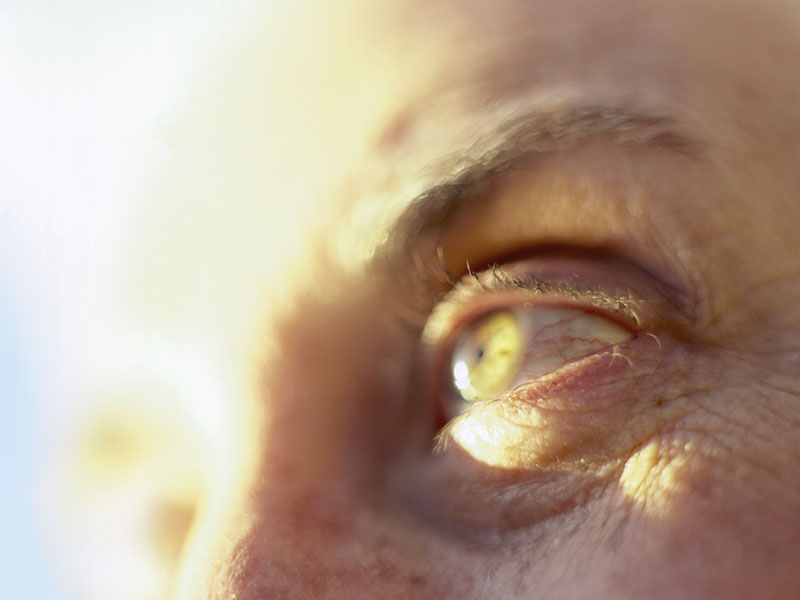

Coming Soon: Glaucoma Self-Care, From Home?
Study finds many patients can manage self-testing, but one doctor questions its valueFriday, September 22, 2017

FRIDAY, Sept. 22, 2017 (HealthDay News) -- For many glaucoma patients, repeat trips to a doctor's office to check on their eyes can be a real pain.
But new research supports the usefulness of a device that allows glaucoma patients to measure their own eye pressure -- in the comfort of their own home.
Researchers found that among 100 glaucoma patients, most were able to successfully use the handheld device, called Icare HOME. That suggests that at-home measurements would be reasonable for many, the study authors said.
Glaucoma refers to a group of diseases where fluid builds up in the eye, creating pressure that damages the optic nerve. It's a leading cause of blindness in older adults, according to the American Academy of Ophthalmology.
Many people are familiar with the tests eye doctors use to detect and monitor glaucoma, including tonometry, which measures pressure within the eye. Doctors do it with an instrument that puts a small amount of pressure on the cornea using a tiny probe or puff of air.
The problem is, pressure within the eye shifts throughout the day, said Dr. Andrew Tatham, the lead researcher on the new study.
That means periodic office measurements may not tell the whole story, said Tatham, a consultant ophthalmologist at the University of Edinburgh in Scotland.
So Tatham's team decided to study a home device that is designed for "self-tonometry."
Icare HOME, developed by a Finnish company, is already on the market. It was approved in the United States earlier this year. Tatham and his colleagues wanted to find out how easily patients can use the product.
With funding from the UK's National Health Service, the researchers recruited 100 patients with either glaucoma or ocular hypertension -- higher-than-normal pressure in the eye that can lead to glaucoma.
Each patient received a 30-minute lesson on using the home tonometer, then the investigators watched as the patient tried it out. The patients' self-measurements were then compared against an eye doctor's measurements -- using standard office testing -- and the researchers' measurements using the home device.
Just under three-quarters of the patients met with success, the study found. The patients used the tonometer correctly and got readings within 5 points of what the professionals did with the same device.
A few others were able to take self-measurements, but ended up with readings that were more than 5 points off. The rest -- one-fifth of the group -- were unable to manage the device.
The findings suggest that many glaucoma patients can manage the device, at least right after being shown how.
But that does not mean people need one, said Dr. Andrew Iwach, a spokesperson for the American Academy of Ophthalmology. He was not involved in the research.
He said the concept of home tonometry is "a good one," and could prove useful in certain circumstances.
But should patients rush out to buy one of these? "No," Iwach said.
In theory, Tatham explained, home measurements could help doctors better monitor glaucoma patients, and know when treatment is necessary -- or whether a current treatment is working well.
Treatment -- including eye-drop medications and laser surgery -- can help prevent further damage to the optic nerve and ward off vision loss.
But, Iwach said, eye pressure measurements are only "one piece of the puzzle." And doctors and patients will have to consider whether the burden of home measurements is worthwhile on a case-by-case basis.
"I think for most patients, our current techniques do the trick," Iwach said.
How does the home tonometer work? Users hold it over one eye, and a green light tells them when it's properly positioned. The device then sends out a tiny probe that "gently touches" the cornea for a few milliseconds, Tatham said.
There's no need for the numbing eye drops that doctors use for office measurements. In this study, Tatham said, most patients said the device was "comfortable to use."
But the most important question, he said, is whether home measurements will make a difference in patients' risk of vision loss.
"Studies are needed that examine whether having more pressure measurements from self-tonometry improves our ability to identify patients at higher risk of visual loss," Tatham said.
What's important, Iwach noted, is that adults get a "baseline" eye exam at age 40, and return for follow-ups as their doctor suggests.
"The good news," he said, "is that when we catch glaucoma early enough, we can help you maintain your vision."
The study results were published online recently in JAMA Ophthalmology.
SOURCES: Andrew Tatham, FRCOphth., consultant ophthalmologist, University of Edinburgh, Scotland; Andrew Iwach, M.D., clinical spokesperson, American Academy of Ophthalmology, San Francisco, and executive director, Glaucoma Center of San Francisco; Aug. 31, 2017, JAMA Ophthalmology, online
HealthDay
Copyright (c) 2017 HealthDay. All rights reserved.
News stories are written and provided by HealthDay and do not reflect federal policy, the views of MedlinePlus, the National Library of Medicine, the National Institutes of Health, or the U.S. Department of Health and Human Services.




























.png)











No hay comentarios:
Publicar un comentario